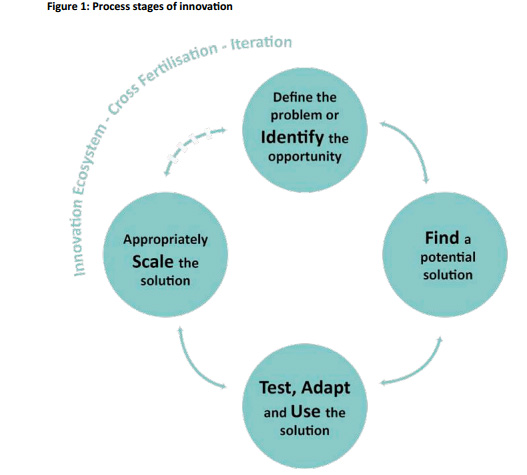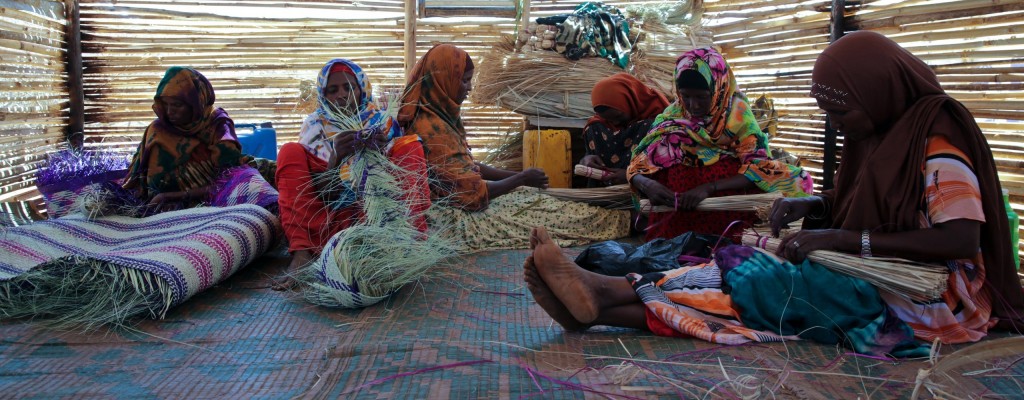This is an excerpt from the Humanitarian Innovation Project’s recently released report: Refugee Innovation: Humanitarian innovation that starts with communities. This report highlights and showcases some of the innovative capacities of crisis-affected communities.
A longstanding challenge for the humanitarian system has been to find ways in which those traditionally ‘served’ in a humanitarian crisis can be engaged in a more ‘participatory’ and ‘empowering’ way.[1] Yet these intentions often end up as hollow rhetoric against the backdrop of top-down aid interventions. How can people’s own creativity and ideas be supported rather than undermined by expensive ‘top-down’ innovations brought in from the developed world?
Recent debates in the emerging field of humanitarian innovation represent an opportunity to ask what a people-centred approach to humanitarian response can actually mean. Innovation is the way in which individuals or organisations solve problems and create change by introducing new solutions to existing problems. Contrary to popular belief, these solutions do not have to be technological and they do not have to be transformative; they simply involve the adaptation of a product or process to context.
‘Humanitarian’ innovation may be understood, in turn, as “using the resources and opportunities around you in a particular context, to do something different to what has been done before”[2] to solve humanitarian challenges. Or, put more colloquially, in the words of one senior UN humanitarian:
“Innovation is dynamic problem-solving among friends”.[3]
Around the world, communities affected by crisis are at the forefront of any humanitarian response. Faced with significant constraints, they adapt to find solutions of their own and navigate new and challenging environments. In doing so, they often support one another along the way. These solutions can change over time. As any emergency response evolves over days, months and in many cases years, the presence and scale of solutions led by the affected community become more prominent.
We call this type of innovation, driven by affected communities themselves, ‘bottom-up innovation’, and we identify it as a critical but overlooked component of a broader phenomenon called ‘humanitarian innovation’. Humanitarian innovation can of course occur at many levels. It can emerge from adaptation and learning within humanitarian organisations. It can come from new partnerships with business. However, far more neglected has been innovations emerging from within affected communities, who are more typically thought of as vulnerable and passive victims.
In the private sector, the concept of ‘innovation management’ has existed for over a century, as thinkers and practitioners use definitions and models to help implement new ideas.[4] For some, innovation has been conceived of as a process from problem definition, solution identification, iteration and scale. This process may happen in many cycles before one solution is found and scaled up. This process does not happen in isolation, however, and the barriers and opportunities people meet along the way are defined by their wider environment, social connections and regulations within which they live and work.
Although there are a variety of ways to conceptualise innovation,[5] we have found it useful to think of innovation as a four-stage process (as shown in Figure 1). This process involves 1) specifying a problem; 2) identifying a possible solution; 3) piloting and adapting the solution; 4) scaling the solution if and where appropriate. In practice this is not a linear process and necessarily involves iterative feedback across the stages. Some of the factors than enable this process include ecosystems that provide access to infrastructure, services, networks and financing.

In recent years, discussions about the role of innovation in humanitarian aid and response framed by these concepts have become prevalent in the aid community. Since around 2009 there has been an identifiable ‘innovation turn’ across the humanitarian system. United Nations agencies, NGOs, governments, businesses, and even the military have begun to engage with the idea of humanitarian innovation, including by creating special labs, funds, and partnerships to enable untapped ideas and solutions to be drawn upon.[6]
There is growing optimism that innovation can play an important role in transforming the humanitarian system to make it better adapted to current and future challenges, threats, and opportunities. The importance of these on-going discussions about humanitarian innovation has been recognised by the 2016 World Humanitarian Summit.[7] Yet much of the humanitarian innovation debate so far has focused on improving organisational responses in humanitarian crises. Although this is a critical topic of discussion, the role of innovation by crisis-affected communities themselves remains an under-studied and neglected subject.
However, there is growing recognition of the potential for bottom-up humanitarian innovation. A number of organisations such as UNICEF (The United Nations Children’s Fund) and UNHCR (The United Nations Refugee Agency) are gradually including innovation by affected communities within their innovation work[8] and innovative funding initiatives such as the Humanitarian Innovation Fund are considering how better to disburse funding to communities themselves.
Yet there remains a need to conceptualise what a genuinely people-centred approach to humanitarian innovation would look like.
How can the voices of affected communities be adequately involved or represented? What degree of participation by affected communities is desirable and possible, and under what conditions? How can participatory methods be better adapted to humanitarian innovation? We do not purport to resolve these debates here. However, this report offers a starting point by simply highlighting and showcasing some of the innovative capacities of crisis-affected communities.
We focus on refugees as an example of crisis-affected communities. Refugees represent a wide spectrum of people affected by humanitarian crisis spanning the emergency phase through to protracted displacement crises. They are also an important population to study in their own right given that there are now over 50 million displaced people in the world, more than at any time since the Second World War. Against that backdrop, there is a particular need to consider more sustainable solutions for refugees and displaced populations.
We draw our case studies from a spectrum of contexts. We cover advanced-industrialised, middle-income, and developing country host states. We address different stages of the displacement ‘cycle’: mass influx, protracted displacement, and resettled refugees. We look at urban and rural contexts. And we take our cases from three continents. While our examples from Uganda, Jordan, South Africa, Kenya, and the United States are by no means representative, they offer a cross-section of examples of the diversity of refugee innovation.
This excerpt first appeared in Refugee Innovation: Humanitarian innovation that starts with communities. Over the next few weeks, we will highlight some of the refugee-led innovations examined in the report.
1. For discussion of these topics see, for example, Chambers, R (1997) Whose reality counts? : putting the first last, London: ITDG; and Cooke, B and Kothari, U (eds.) (2001) Participation: the new tyranny?, London: Zed Books
2. Quote from discussions with an international humanitarian aid worker, 2015.
3. Aleinikoff, A (2014) ‘Innovation – what, why and how for a UN organisation’, Forced Migration Review Special Issue Refugees & Innovation, Oxford: Refugee Studies Centre
4. For example see Fagerberg, J. (Ed.) (2013) The Oxford Handbook of Innovation Management,Oxford : Oxford University Press
5. For example see Tidd, J. and Bessant, J.R. (2009) Managing innovation: integrating technological, market and organisational change,Chichester : John Wiley
6. Betts, A and Bloom, L (2014), Humanitarian Innovation: The State of the Art, New York: OCHA.
7. ‘Transformation Through Innovation’ is one of four thematic areas for the World Humanitarian Summit.
8. For example UNICEF runs a By Youth For Youth programme in Kosovo which offers entrepreneurship mentoring and grants, and UNHCR runs a collaborative idea-generation website to bring in ideas from partners and refugees, also see Bloom, L and Faulkner, R (2015) Innovation Spaces : ‘Transforming humanitarian practice in the United Nations’, Refugee Studies Centre Working Paper No. 107
About the Humanitarian Innovation Project
The Humanitarian Innovation Project (HIP) undertakes research on the role of technology, innovation and the private sector in refugee assistance. The project takes a ‘bottom-up’ approach, attempting to understand and build upon the skills, talents and aspirations of refugee communities. It has both academic and practical aspects, contributing to ways in which we understand the political economy of refugee protection and assistance, while also contributing directly to policy through partnerships with UNHCR and other organisations.
If you’d like to repost this article on your website, please see our reposting policy.

